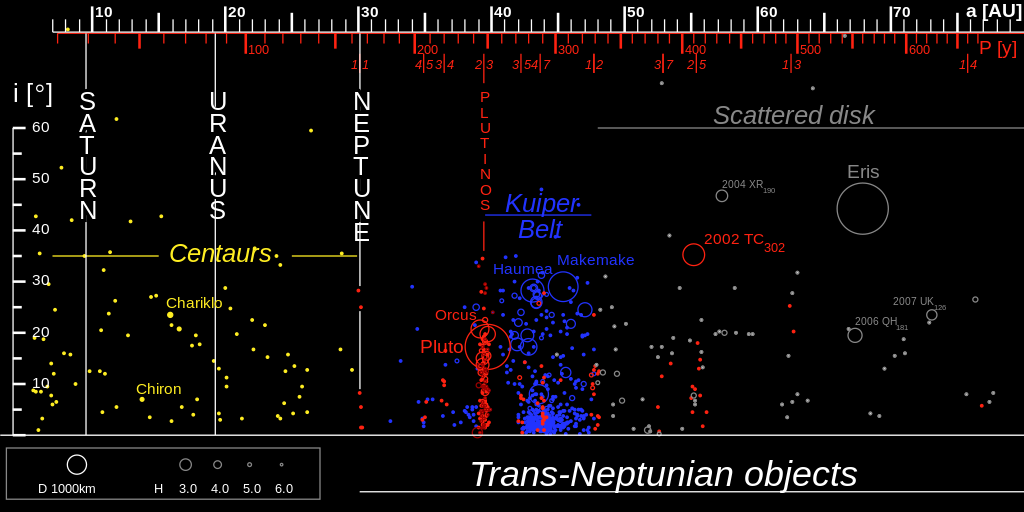
Caption: "Distribution and classification of the trans-Neptunian objects and Centaurs. Generated by a computer program written by User:Eurocommuter." (Slightly edited.)
Features:
- Horizontal axis: semi-major axis a (astronomical units (AUs)) in white and, with a logarithmic scale, orbital period P (years) in red. Also shown in red are the orbital resonance ratios with Neptune's orbital period 164.8 yr. Gravitational perturbations by Neptune cause some objects to be driven into orbital resonance with Neptune which causes their orbital periods to be continually driven toward some small-number ratios with Neptune's orbital period: e.g., P_neptune:P_object = 1:1, 4:5, 3:4, 2:3, 3:5, 4:7, 1:2, 3:7, 2:5, 1:3, 1:4 ...
- Vertical axis: orbital inclination i to the ecliptic plane in degrees.
- The circle size gives the relative size of the astronomical objects. For large objects, the size represents best current estimate. For others, the circle size represent the object's H magnitude which is roughly correlated object size.
- Families:
- Blue = Classical Kuiper belt objects (cubewanos).
- Yellow = Centaurs which are NOT trans-Neptunian objects, but are a related family. They each probably originated as Trans-Neptunian Objects some megayears ago before some interaction kicked them inward.
- Grey = scattered disk objects which have high orbital inclinations.
- Red = Objects in orbital resonance with Neptune: Plutinos and other resonant Trans-Neptunian objects---which are excluded from the color scheme above.
- See Trans-Neptunian object keywords below (local link / general link: trans_neptunian_objects_keywords.html):
Credit/Permission: ©
User:Eurocommuter,
2006 /
Creative Commons
CC BY-SA 3.0.
Image link: Wikipedia:
File:TheTransneptunians 73AU.svg.
Local file: local link: trans_neptunian_objects_distribution.html.
File: Solar System file:
trans_neptunian_objects_distribution.html.